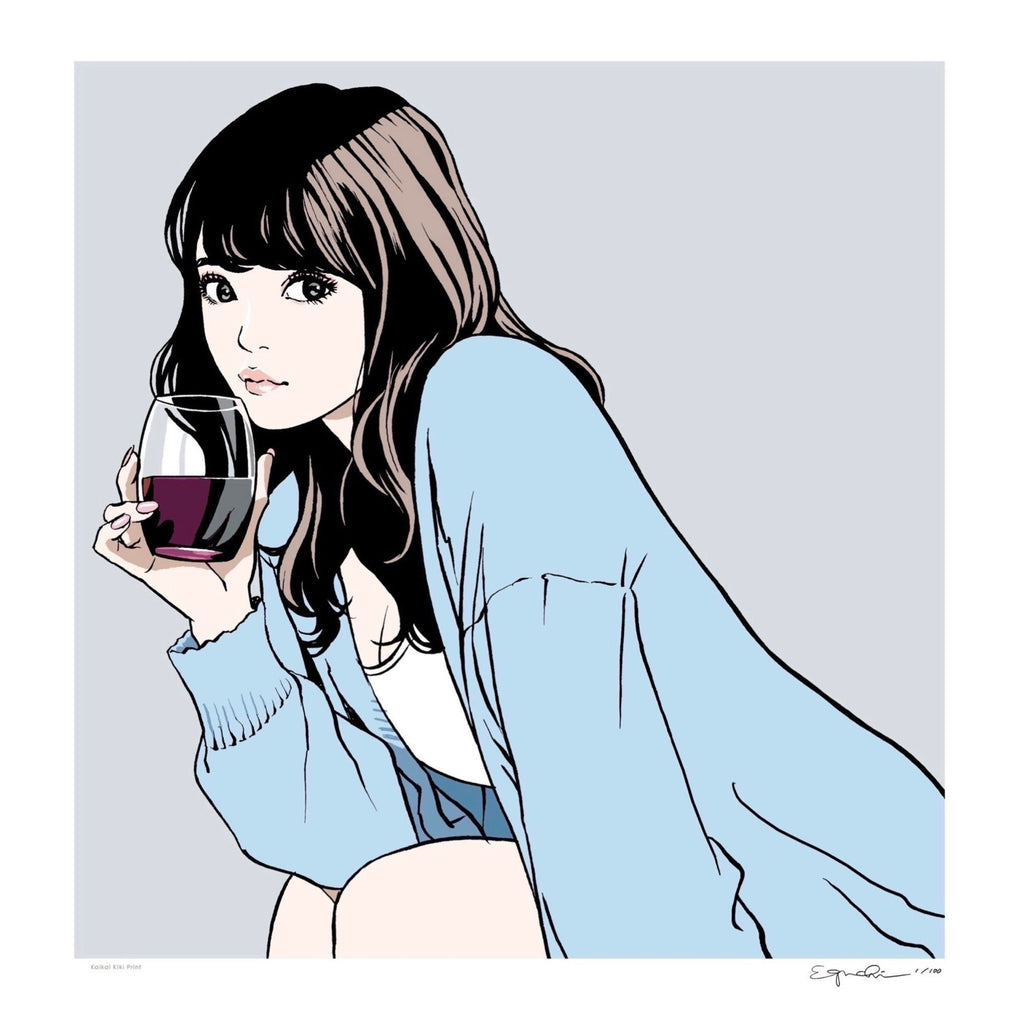Hisashi Eguchi: Japan’s King of Pop Art Manga

Hisashi Eguchi: Japan’s King of Pop Art Manga
Hisashi Eguchi, born on March 29, 1956, in Minamata, Kumamoto Prefecture, is a renowned Japanese manga artist and illustrator. Celebrated for his clean lines, pop art influences, and iconic portrayals of stylish female characters, Eguchi has significantly impacted manga, illustration, and animation.
Early Career and Breakthrough
Eguchi’s professional debut occurred in 1977 with Susume!! Pirates, a baseball-themed comedy serialized in Weekly Shōnen Jump. This series, which ran until 1980, showcased his talent for blending humor with sharp visual storytelling. In 1981, he introduced Stop!! Hibari-kun!, a romantic comedy about a teenage boy enamored with Hibari Ōzora—a beautiful, confident girl assigned male at birth. The series was groundbreaking, addressing themes of gender identity with warmth and humor, and was adapted into an anime in 1983. However, due to the pressures of weekly serialization, Eguchi concluded the manga in 1983.
Artistic Style and Influence
Eguchi’s art is distinguished by its clean, precise lines and minimalist detail. Influenced by American pop artists like Roy Lichtenstein and Andy Warhol, as well as European artists such as Moebius and Hergé, he developed a style that is both retro and timeless. Eguchi emphasizes simplicity in his work, stating, “I like to use organized lines. The fewer the lines, the better.”
His illustrations often depict fashionable women, combining elegance with a playful, sometimes satirical tone. This aesthetic has made him a sought-after illustrator for advertising, magazine covers, and brand collaborations, extending his influence beyond traditional manga audiences.
Animation and Other Works
Eguchi’s contributions extend into animation. In 1991, he served as the character designer for Katsuhiro Otomo’s Roujin Z, modeling the heroine Haruko after his wife, former idol Mari Mizutani. His influence is also evident in the visual style of Satoshi Kon’s psychological thriller Perfect Blue.
In 1994, Eguchi founded Comic Cue, an alternative manga magazine aimed at assembling a “dream team” of manga artists. Contributors included notable figures like Katsuhiro Otomo, and the publication became a platform for creative experimentation.
Legacy
With a career spanning nearly five decades, Hisashi Eguchi remains a significant figure in Japanese pop culture. His work continues to inspire new generations of artists who admire his ability to balance humor, beauty, and pop sensibility. Whether through manga, illustrations, or design work, Eguchi’s voice is unmistakable—bold, stylish, and perpetually ahead of its time.
References
• Tokion. (2021). “Why Hisashi Eguchi Chooses to be Both a Manga Artist and Illustrator.” Retrieved from https://tokion.jp/en/2021/10/23/tokinooto-vol16-hisashi-eguchi/
• MutualArt. “Hisashi Eguchi Biography.” Retrieved from https://www.mutualart.com/Artist/Hisashi-Eguchi/575E39FBA731BBF5/Biography
• Halcyon Realms. (2023). “STEP 2 – Eguchi Hisashi Illustration Book Review.” Retrieved from https://halcyonrealms.com/books/step-2-eguchi-hisashi-illustration-book-review/
• Trend Hunter. (2022). “Hisashi Eguchi Debuts First-Ever Solo Exhibition NO MANNER.” Retrieved from https://www.trendhunter.com/trends/hisashi-eguchi
• Tsundoku Diving. (2022). “Pop Step: A Hisashi Eguchi Exhibition.” Retrieved from https://www.tsundokudiving.com/talking-art-pop-step-a-hisashi-egushi-exhibition/
